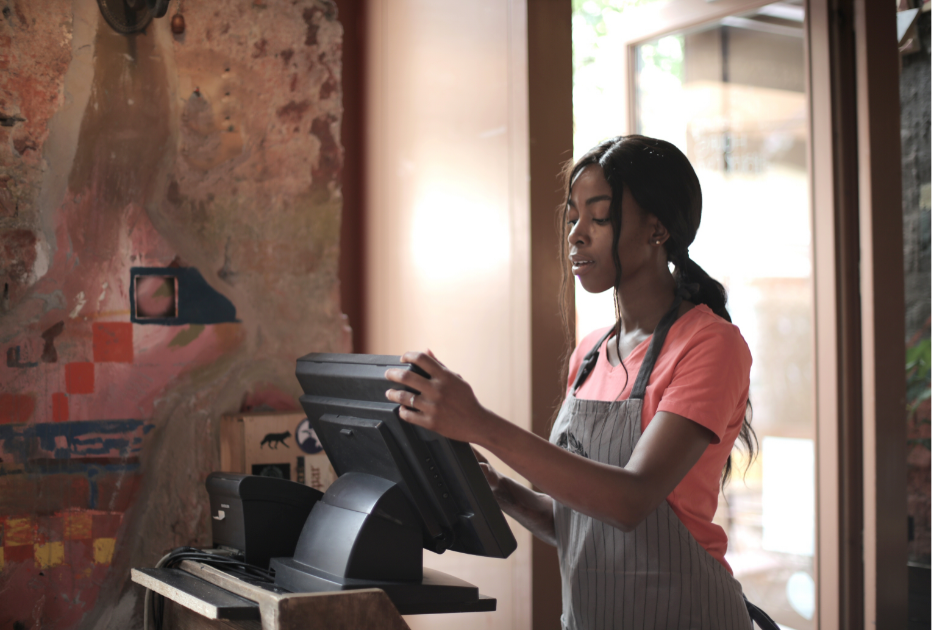What can you learn about someone from seeing their bedroom?
There are all kinds of theories about how things like color and clutter can convey everything from romantic viability to mental health and so much more. But suffice to say: Those private places where we rest our heads can sure reveal a lot.
Perhaps a better question is: What can you learn about people in general from seeing lots and lots and lots of bedrooms?
That's what French photographer John Thackwray wanted to know.
As part of that vaguely-defined group of '80s and '90s babies known as "millennials," Thackwray saw firsthand how technology was changing the world at increasingly rapid rates and began to wonder about the impact that was having on his generation all around the world. What was the relationship between internet connectivity and inequality and things like education, women's rights, and poverty?
What better way to find out than to look at people's bedrooms?
A map of everywhere that Thackwray shot a "My Room" photograph. All photos by John Thackwray/My Room Project.
Over a period of six years, Thackwray photographed and interviewed more than 1,200 young people in their bedrooms (or other sleeping spaces) in 55 different countries.
Like him, they were all millennials. Thackwray found his subjects with the help of friends, social media, and local NGOs — although he did occasionally ask random people on the street if he could photograph their bedrooms, which was just as awkward, and as dangerous, as one could imagine.
But it also helped him learn a lot along the way.
"Each person has their own story and they can talk about something that is wider and more universal. [...] such as living into the war, adoptions, the traditional values, the rural exodus, or the African unity for example. I’m trying to do a big story in a small one," he explained.
Take a look at some of Thackwray's personal favorites and see for yourself what kinds of patterns or other surprising things you notice.
1. Room #24: Joseph, 30, an artist in Paris
2. Room #192: Andreea, 24, a civil engineer in Bucharest, Romania
3. Room #205: Gullé, 29, an actress in Istanbul, Turkey
4. Room #219: Maleeq, 28, an entertainer in New York City
5. Room #256: Ryoko, 25, an IT engineer in Tokyo
6. Room #290: Yuan, 22, a seller in Dali, China
7. Room #313: Fha, 20, a farmer in Ban Sai Ngam, Thailand
8. Room #348: Asha, 17, a housewife in Bamansemilya, India
9. Room #385: Pema, 22, a Buddhism student in Kathmandu, Nepal
10. Room #416: Oleg, 24, a telecom engineer in Novosibirsk, Russia
11. Room #458: Zhalay, 18, a high school student in Zhambyl, Kazakhstan
12. Room #466: Élahé, 29, a painter in Tehran, Iran
13. Room #561: Ben, 22, a movie student in Dallas
14. Room #665: Marcello, 18, a high school student in La Paz, Bolivia
15. Room #711: Claudio, 24, an archivist in Rio de Janeiro, Brazil
16. Room #733: Fatou, 17, a seamstress in Thiès, Senegal
17. Room #807: Mohamad, 18, a high school student in Saint Catherine, Egypt
18. Room #867: Ezekiel, 22, a warrior-nomad in Echo Manyata, Kenya
19. Room #915: Josee, 22, an accounting student in Kigali, Rwanda
20. Room #1049: Osia, 18, a shepherd in Ha Selomo, Lesotho
21. Room #1093: Sabrina, 27, a kindergarten teacher in Shatila, Lebanon
These photos are all clearly similar in their bird's eye views of smiling subjects. But they have more in common than one might notice at first glance.
"Most of them share an access to Internet and social network, including Saudi young women and farmers in the African bush. This is definitely the connected generation," Thackwray said. "And something important to keep in my mind is that this is the youth who is designing the world of tomorrow."
They also all have items of personal significance that they keep close to them — which perhaps isn't surprising, but is still a moving reminder that we all fall into the same habits, and seek those small moments of happiness in surprisingly similar ways.
"Many people confuse comfort and happiness," Thackwray said. "Actually I've see more smiles in poor countries, and much more depression in developed countries."
The private places where people sleep reveal a lot about us as individuals. But viewed together, they make a powerful statement about how we all seek solace and serenity, despite our differences in race, religion, gender, career, income, and experience.




 Beaver on riverbank.
Beaver on riverbank.  Pbs Nature Swimming GIF by Nature on PBS
Pbs Nature Swimming GIF by Nature on PBS  An actual beaver dam on the now-thriving Price River
An actual beaver dam on the now-thriving Price River 
 Who doesn't love Pluto?
Who doesn't love Pluto?  Pluto agrees.
Pluto agrees. 
 a piece of paper with a heart drawn on it Photo by
a piece of paper with a heart drawn on it Photo by 
 "Bought an espresso machine, took some time to learn how to dial it in and pull a proper shot."
"Bought an espresso machine, took some time to learn how to dial it in and pull a proper shot." "Frozen meals are just as unhealthy, but much cheaper."
"Frozen meals are just as unhealthy, but much cheaper." "I’ve embraced the gray!"
"I’ve embraced the gray!"  "Bidet toilet seat is cheap, easy to install, much easier and faster to use."
"Bidet toilet seat is cheap, easy to install, much easier and faster to use."
 American portion sizes are colossal.Canva Photos
American portion sizes are colossal.Canva Photos American public restrooms aren't very private.Canva Photos
American public restrooms aren't very private.Canva Photos Cashiers in America stand all shift long.Canva Photos
Cashiers in America stand all shift long.Canva Photos America loves the Pledge of Allegiance.Canva Photos.
America loves the Pledge of Allegiance.Canva Photos. Cosmetic surgeries on pets are...a choice.Canva Photos.
Cosmetic surgeries on pets are...a choice.Canva Photos. America loves extra sugar in savory foods.Canva Photos.
America loves extra sugar in savory foods.Canva Photos.